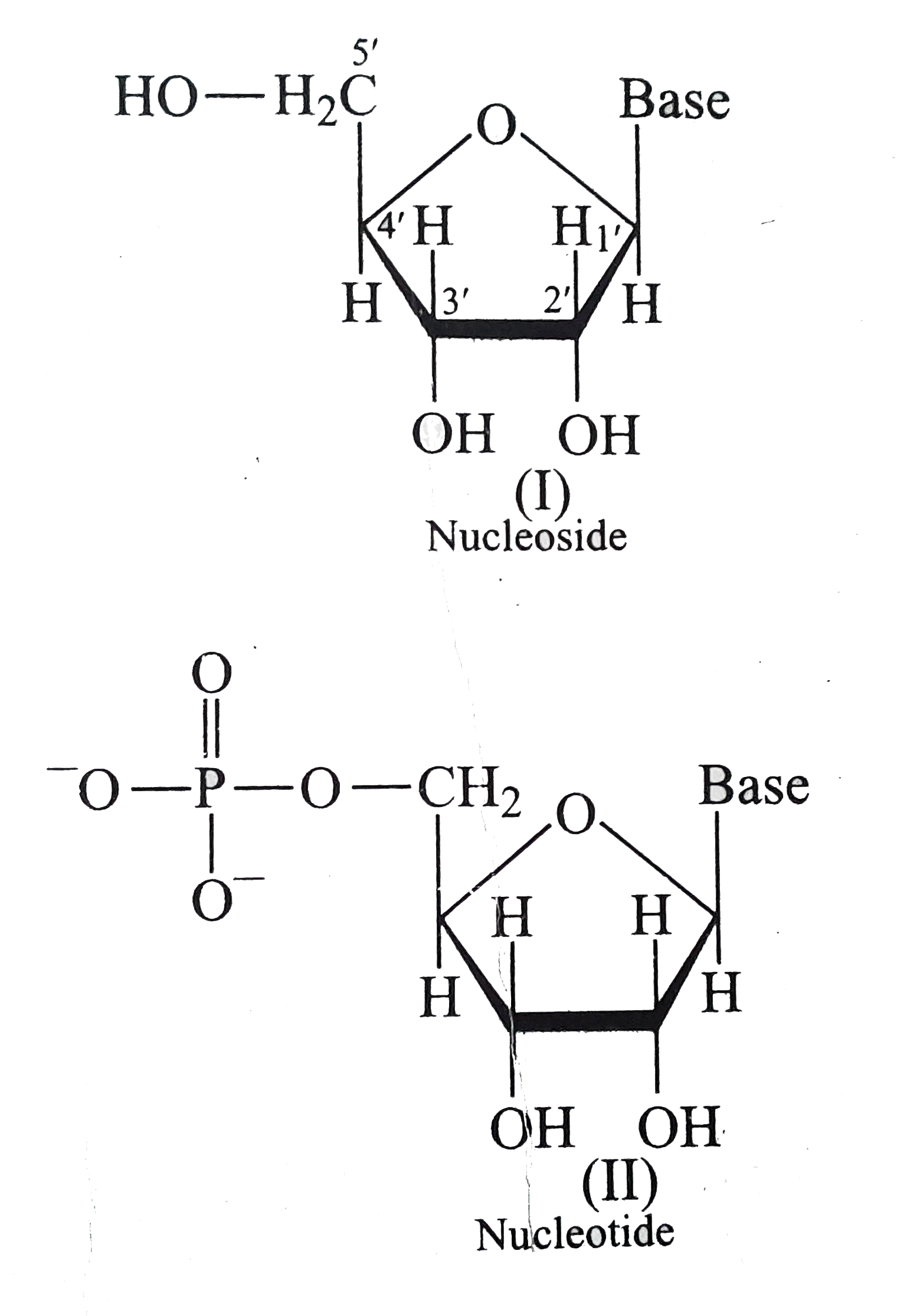What is the difference between a nucleoside and a nucleotide?
A nucleoside is formed when 1-position of pyrimidine (cytosine, thiamine, or uracil) or 9-position of purine (guanine or adenine) base is attached to C−1 of sugar (ribose or deoxyribose) by a β−linkage to −1 of sugar (ribose or deocyribose) by a β−linkage. thus, in general, nucleosiedes may ne represnted as: sugar-base: for example, structure (I) represent a nucleoside.

A nucleotide contains all the three basic components of nucleic acids, i.e., a phosphoric acid group, a pentose sugar, and a nitrogenous base. these are obtained by the esterfication of (C'5−OH) group of the pentose sugar by phosphoric acid.
Thus, in general, a nucleotide is represented as
Sugar−Base−O−O∣∣P∣∣O−OH. For example, structure (II) represents a nucleotide.
Topper's Solved these Questions
- BOOK - CENGAGE CHEMISTRY ENGLISHCHAPTER - BIOMOLECULESEXERCISE - Exercises (Linked Comprehension)36videos
BIOMOLECULES
- BOOK - CENGAGE CHEMISTRY ENGLISHCHAPTER - BIOMOLECULESEXERCISE - Exercises (Multiple Correcttype)30videos
BIOMOLECULES
- BOOK - CENGAGE CHEMISTRY ENGLISHCHAPTER - BIOMOLECULESEXERCISE - Solved Examples45videos
BIOMOLECULES
- BOOK - CENGAGE CHEMISTRY ENGLISHCHAPTER - AROMATIC COMPOUNDS AND ALKYL AND ARYL HALIDES EXERCISE - Archives Subjective Type4videos
AROMATIC COMPOUNDS AND ALKYL AND ARYL HALIDES
- BOOK - CENGAGE CHEMISTRY ENGLISHCHAPTER - CARBOXYLIC ACIDS AND THEIR DERIVATIVESEXERCISE - Exercises Archives (Analytical And Descriptive)34videos
CARBOXYLIC ACIDS AND THEIR DERIVATIVES
Similar Questions
(i) Write the name of two monosaccharides obtained on hydrolysis of lactose sugar.
(iii) Why Vitamin C cannot be stored in our body?
(iii) What is the difference between a nucleoside and nucleotide?View SolutionWhat is the difference between a nucleotide and nucleoside ? Give two examples of each with their structure.
View Solution
Knowledge Check
- Question 1 - Select One
Nucleotides
Acontain a sugar, a nitrogen-containing base, and a phosphate moleculeBare the monomers for fats and polysaccharidesCjoin together by covalent bonding between the basesDall of the above
Nucleoside and nucleotide
View SolutionWhat is the difference between a fruit and a seed?
View SolutionWhat is the difference between r and R ?
View SolutionWhat is the difference between a rock and a mineral ?
View SolutionWhat is the difference between a rock and a mineral ?
View SolutionWhat is the difference between a rock and a mineral ?
View SolutionWhat is the difference between
cell and tissue ?View Solution

